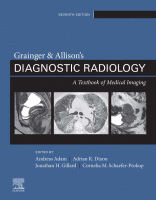Physical Address
304 North Cardinal St.
Dorchester Center, MA 02124

Bacterial Infections Bacterial Meningitis The causes of bacterial meningitis are age-dependent; in adults the most common causes are Streptococcus pneumoniae and Neisseria meningitidis . Bacteria can reach the meninges by haematogenous dissemination, spread from an adjacent focus of infection (such…

Stroke Stroke is the third leading cause of death in Western populations and is the largest single cause of adult disability. It has a tremendous medical, social and economic impact. Over 80,000 cases develop in the UK every year. The…

Radiological Investigations in Intracranial Tumours Brain tumours are a leading cause of death in young adults, but they occur at all ages with a variable prognosis depending on lesion type. The aim of imaging at first diagnosis is to localise…

Introduction Traumatic brain injury (TBI) is a major cause of mortality and morbidity. In England and Wales, approximately 1.4 million patients per year attend hospital following head injury and it is the most common cause of death under the age…

Introduction Neuroradiology forms an important part of radiology training and a substantial part of many, if not most, radiologists’ daily work. The latest imaging techniques provide the radiologist with unprecedented anatomical detail. A strong working knowledge of neuroanatomy is crucial…

Clinical Aspects The cervical spine and thoracolumbar junction are the most common sites of spinal trauma. Specifically, the most common sites for fractures and dislocations are the lower cervical spine (C4–7), the thoracolumbar junction (T10–L2) and the craniocervical junction (C1–2).…

Introduction Imaging plays an important role in the assessment of the postoperative spine. The main objectives of imaging are to evaluate the alignment of the spinal column, the position of implants and the status of fusion or fracture healing, and…

Inflammatory Disease Multiple Sclerosis Multiple sclerosis (MS) is a progressive neurodegenerative disorder characterised by multiple inflammatory demyelinating foci called ‘plaques’. The spinal cord is commonly involved with changes on autopsy in up to 98% of the cases. One-third of MS…

Radiological Investigations in Spinal Tumours Computed tomography (CT) and magnetic resonance (MR) imaging are complementary techniques that are needed for evaluation of both the intraosseous extent of the tumour and soft-tissue involvement. MR imaging is the best imaging technique for…

Introduction The spine is a complex anatomical structure composed of vertebrae, intervertebral discs and ligaments. All of these structures may undergo degenerative, morphological and functional changes with age. The intervertebral discs are part of the connection between two adjacent intervertebral…